Refresh and replenish with a simple yet delicious homemade electrolyte drink! Think gatorade, but without all the added sugars, dyes and artificial ingredients.
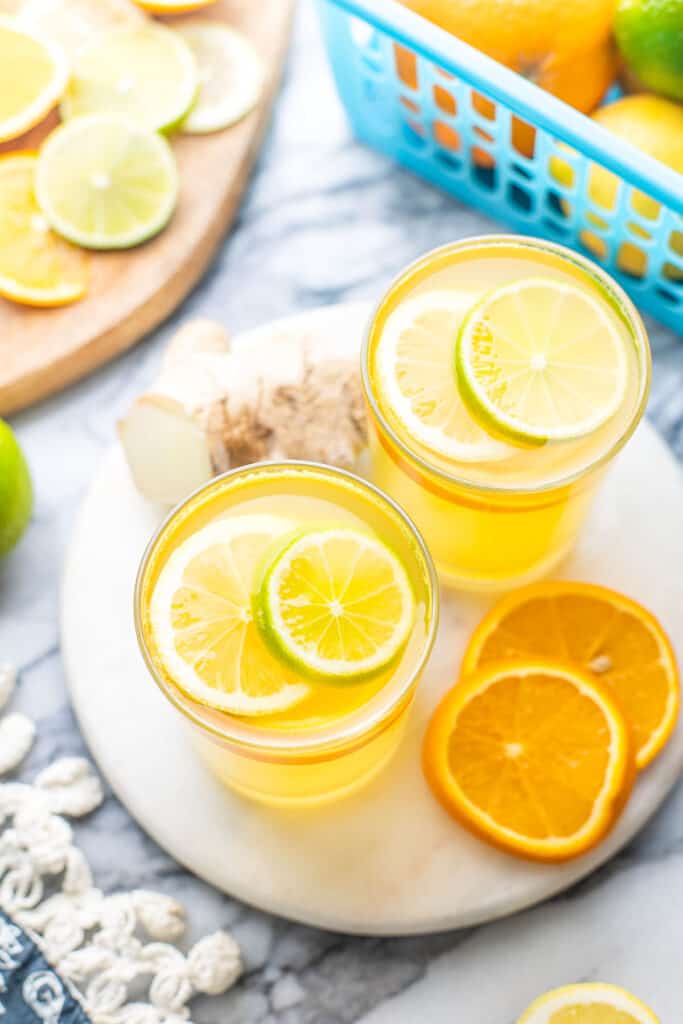
Want to learn how to make your own hydration drink with simple ingredients you likely already have in your own kitchen?
First Things First: What are electrolytes?
Electrolytes are essential minerals (salt, potassium, bicarbonate, etc) that conduct electrical charges when dissolved into water.
They play an important role in the regulating the nervous system and keeping you hydrated.
Signs of electrolyte loss or depletion include: nausea, headaches, fatigue, low blood pressure and muscle cramping. Do you feel hungover? You probably need more electrolytes in your system!
More Foods that Replenish Electrolytes
In fact, any time you find your self losing a lot of fluid, whether that be a stomach bug or heavy exercise, it’s likely you find yourself low on electrolytes. Certain medical conditions (like PoTS) and poor diets can also lead to an electrolyte imbalance.
While it’s easy to forget – human beings are electrical beings and we’re made up of mostly water. With this in mind, it’s no surprise that electrolytes are essential for good health.
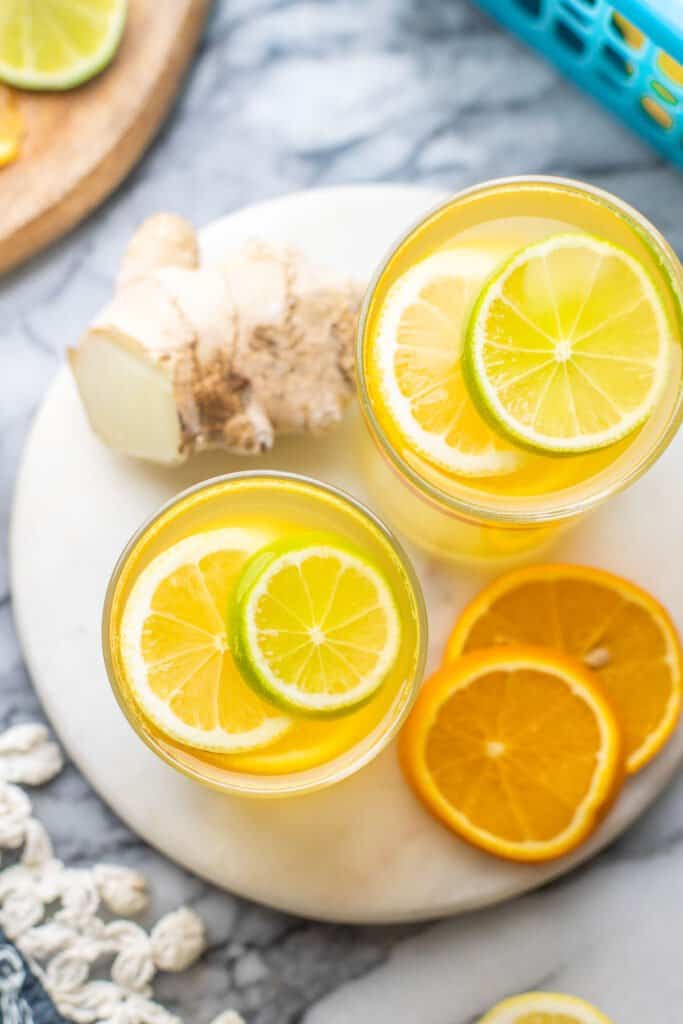
The Original Energy Drink
Despite the high sugar content, I totally understand that traditional sports drinks and general energy drinks do have real benefits.
Gatorade was originally created in 1965 as a means to combat heat exhaustion for the University of Florida football team (the Gators). Between the excessive heat, humidity and strenuous exercise, the Gators were depleted. This translated to excessive weight loss, sluggish performance and sometimes even fainting.
The fix? Basically, a team of researchers worked together to create what was essentially lab-made sweat that footballers would drink for electrolyte replacement.
As you can imagine, sweat-in-a-bottle didn’t exactly taste great. It was however extremely effective. The year following the introduction of Gatorade, the Gators when on to the Orange Bowl for the first time in the schools history.
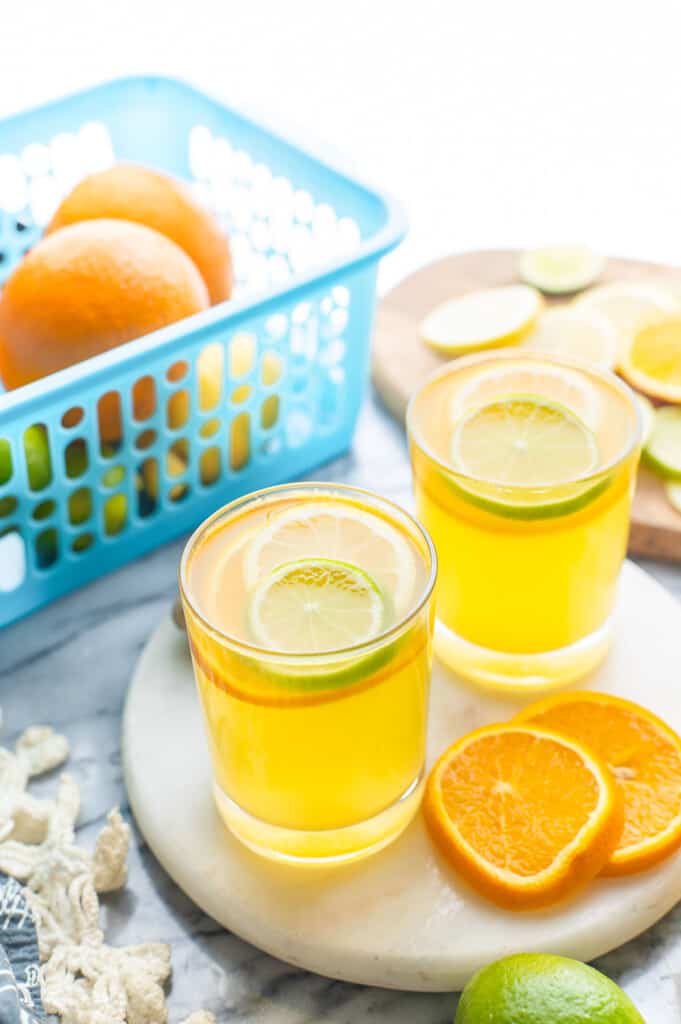
How to Make Your Own Homemade Electrolyte Drink
Fortunately for us, it’s actually quite easy to make a DIY electrolyte drink that tastes good without the excessive added sugar.
All you need is about 20 minutes, a pot and a few natural ingredients you might even have already.
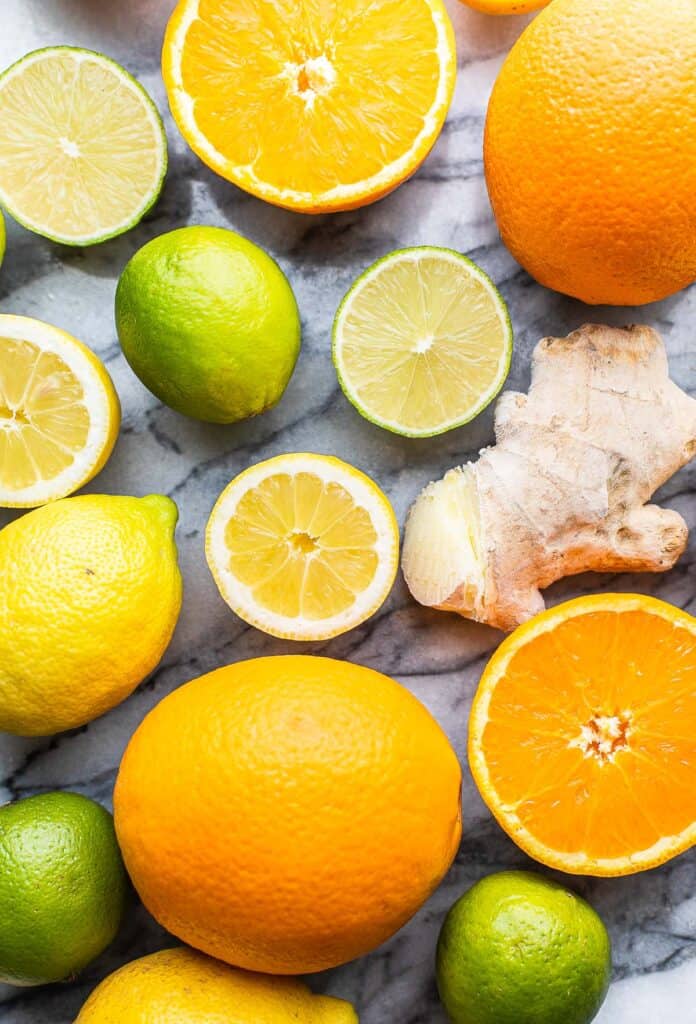
Ingredients
- Citrus Juice
- Orange juice, lemon juice and lime juice add small amounts of citric acid and Vitamin C to support the immune system.
- Fresh Ginger
- Ginger is an anti inflammatory food that has been shown to reduce nausea and headache pain (both symptoms of electrolyte depletion.
- Water
- You can get fancy here if you want with filtered or mineral water, but I simply use plain water from the tap.
- Coconut water is already basically a natural electrolyte drink because is contains potassium, sodium and manganese. Use this for an even more hydrating experience!
- Baking Soda (sodium bicarbonate) & Salt (sodium chloride)
- If you’ve ever wondered why sweat tastes salty it’s because it contains quite a lot of sodium (an electrolyte). While lemons do naturally contain electrolytes and other trace minerals, the addition of baking soda and elevates the amount of electrolytes making this an even more hydrating drink.
- Because of how they are processed, sea salt and pink Himalayan salt contain more trace minerals compared to kosher salt and table salt. For the benefit of a drink like this that is meant to nourish and replenish sea salt might be a better option to maximise nutrients, but the difference is so minimal in these amounts that it doesn’t actually matter much here. Use what you have.
- Natural Sweetener
- Use maple syrup for vegan and low fodmap options.
- Raw honey is always great to use when you can (like this honey simple syrup!). Raw honey is less processed meaning it has likely retained more nutrients. It’s also great to support local beekeepers when possible. That being said – use what you can find and afford and don’t sweat it!
Steps
Altogether, this homemade electrolyte drink recipe is super easy to make with only a few steps and little effort. A quick overview of the steps:
- Combine ginger, citrus and water in a sauce pan.
- Bring to a simmer.
- Stir in the baking soda and salt.
- Remove from the heat and stir in the sweetener.
- Strain out the pulp and solids.
- Cool and enjoy.
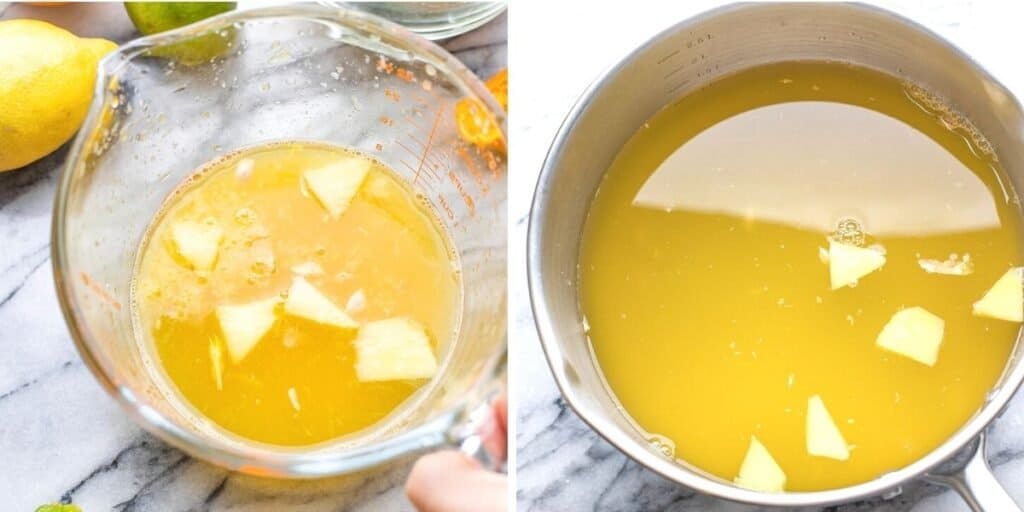
A couple of tips before you begin:
- Don’t worry about fishing out the seeds before you begin because you’re going to strain your drink at the end.
- Before slicing it up, gently smash your ginger with a rolling pin or the side of a large knife (carefully!). This will soften it up making its flavor even more accessible.
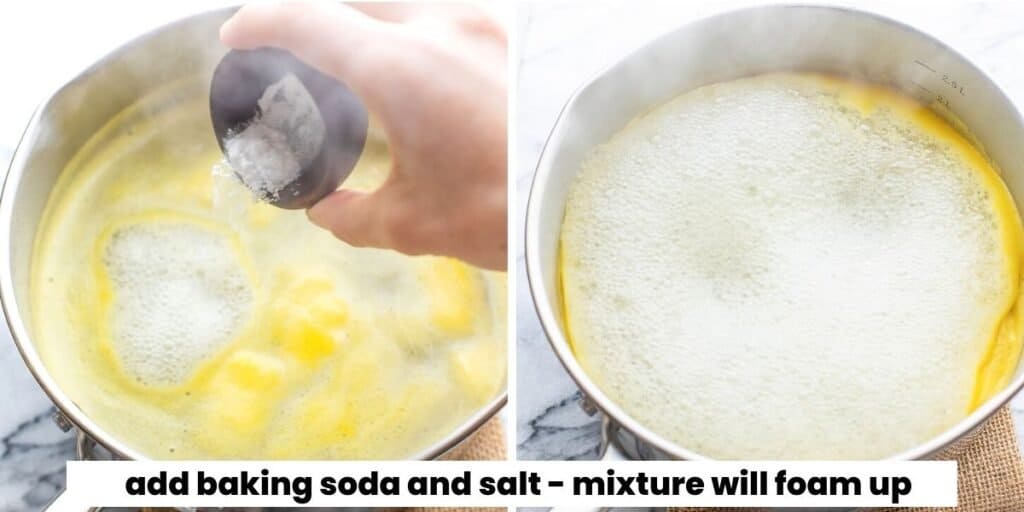
Why does it fizz up?
Right after you add the baking soda and salt to the pot you should notice that the contents of the pan start to foam up a bit.
This is because you’re witnessing a chemical change, an acid-base reaction, take place.
When the baking soda (the base) makes contact with the citrus (citric acid), the two react and create carbon dioxide (the bubbles) and sodium citrate.
Sodium citrate, by the way, is another electrolyte that is shown to help your body absorb fluids and others electrolytes when combined with glucose (aka sugar).
- Side Note: This chemical reaction happens often in baking, you’re just not able to see it happen quite so obviously. The reason why muffins and cookies puff up in the oven is because your baking soda (and baking powder) react to an acidic ingredient (cocoa powder, butter milk, etc) to create gas bubbles (carbon dioxide) which adds volume.
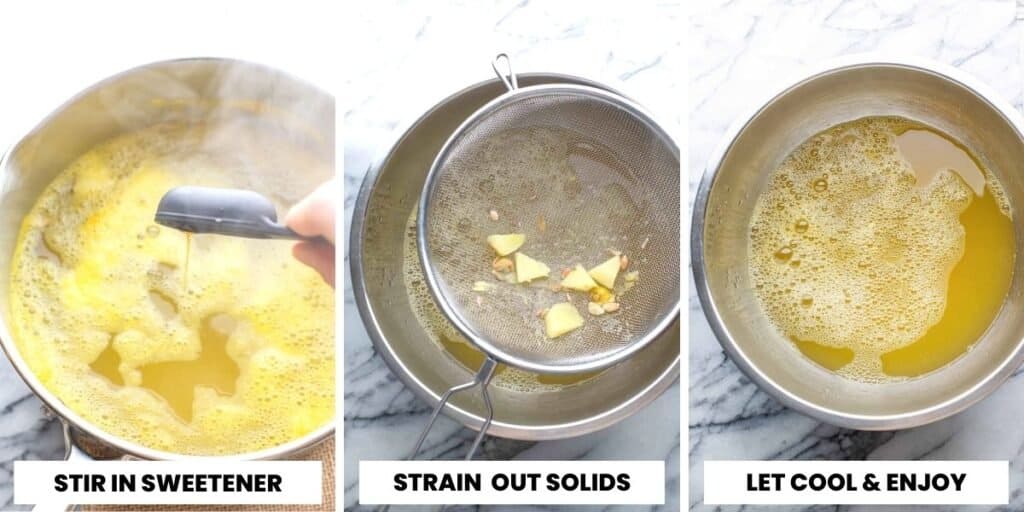
Who is the drink good for?
Professional athlete or not – your body needs to maintain a healthy balance of electrolytes in order to thrive.
Times where electrolyte drinks are particularly useful:
- Before and after working out – especially if you experience muscle cramps after working out. Go eat a banana and then make this drink!
- During or after illness – especially one where you struggle to hold down food. This is basically a homemade pedialyte recipe.
- In the summer or whenever it’s particularly hot outside – Dehydration can really sneak up on you in the heat.
- After a night of drinking – Hangover symptoms are essentially symptoms of electrolyte depletion.
- If you struggle with low blood pressure – Low blood pressure symptoms can manifest in a few different ways. Some of the more common symptoms dizziness, fainting, fatigue. If you’re someone who has PoTS you may benefit by increasing or being more mindful about your electrolyte intake. I started making this back in 2015 after my husband Mike was first diagnosed with PoTS. Over time his health and experience with PoTS has improved, but this drink did help when he was really struggling.
- As always, if you have a medical condition you should always consult you doctor before listening to some rando on the internet!
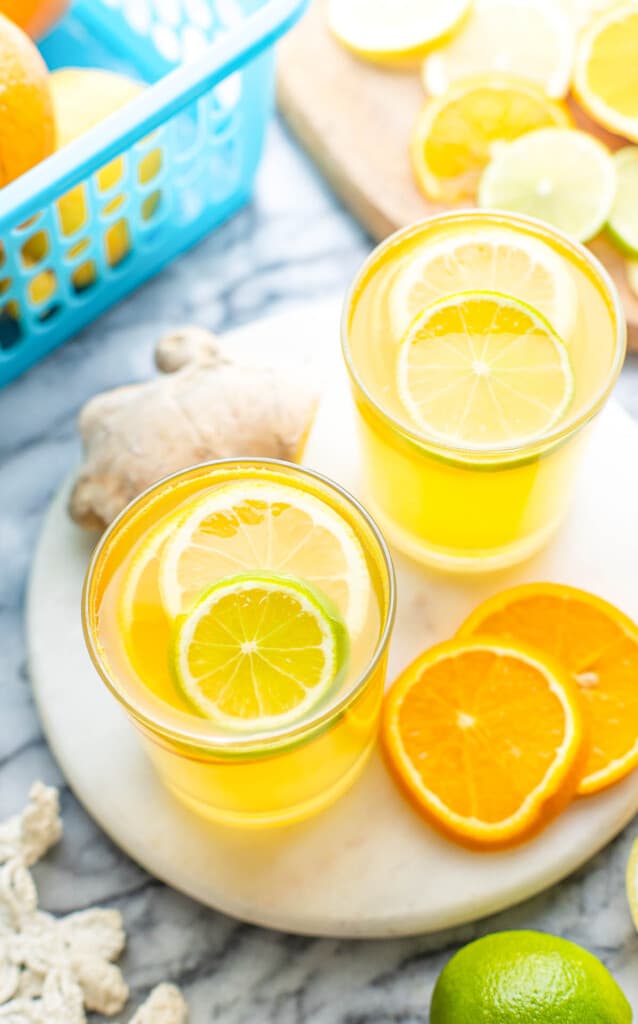
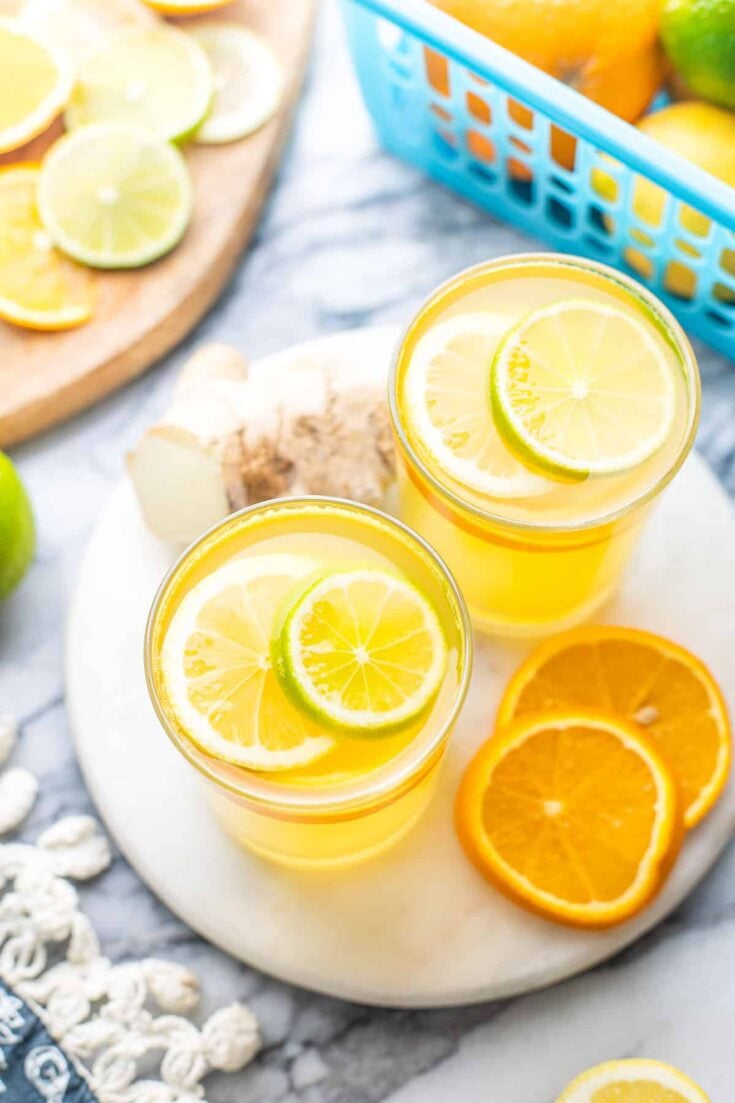
Homemade Electrolyte Drink
Refresh and replenish with a simple yet delicious homemade electrolyte drink! Think gatorade, but without all the added sugars, dyes and artificial ingredients.
Ingredients
- 4 cups of water (960 ml)
- 1-2 inch chunk ginger, smashed and roughly chopped
- 1/2 cup fresh orange juice (120ml)
- 1/4 cup fresh lemon juice (60 ml)
- 2 tablespoons fresh lime juice (30 ml)
- 1/4 teaspoon sea salt
- 1/4 teaspoon baking soda
- 2-3 tablespoons pure maple syrup or honey (see notes for alternatives)
Instructions
- Add the water, orange juice, lemon juice, lime juice and ginger to a medium sized sauce pan. Place over a medium heat and bring to a simmer.
- Add the baking soda and salt to the pot. Stir to dissolve. The liquids will foam up after you add the baking soda so keep an eye on the pot to watch for over flow. The foaminess will reduce after a minute or so. Turn the heat down to medium-low and gently simmer about 2 minutes.
- Turn off the stove and remove the pot from the heat. Stir in 2 tablespoons maple syrup or honey until fully dissolved.
- Place a fine mesh strainer over a large, heat safe bowl. Pour the electrolyte drink into the bowl through the strainer to filter out the solid ginger pieces and citrus seeds. Taste and sweeten with more maple/honey if needed..
- Serve hot or cold. To serve cold, wait for the juice to cool fully before transferring to refrigerator friendly closed containers. Keep in the fridge for up to 5 days and enjoy or pour into ice cube moulds and freeze. Electrolyte ice cubes can be added to water or juice for an extra boost of hydration.
Notes
What Type Of Sweetener?
- Use maple syrup for vegan and low fodmap options.
- You can use a low carb sugar alternative instead, but you will need to add the correct amount at your own discretion. Check the packaging labels for your specific sweetener for guidance. If in doubt, start out with a small amount of sweetener, taste and add more as needed.
Nutrition Information
Serving Size:
about 1 cup (240ml) Calories: 65Total Fat: 0gSaturated Fat: 0gTrans Fat: 0gUnsaturated Fat: 0gCholesterol: 0mgSodium: 213mgCarbohydrates: 18gFiber: 0gSugar: 9gProtein: 0gMore Delicious & Healthy Ways to Hydrate
- Mint Cucumber Lemonade
- Healthy Strawberry Lemonade With Chia Seeds
- Mango Lassi
- Chai Tea Concentrate (Starbucks Copy Cat)
- Healthy Strawberry Shake (With Hidden Veg)
- Sparkling Cardamom Rose Mocktail
- Golden Milk Frappuccino – Paleo & Vegan
- Healthy Frozen Lemonade
- Ginger Turmeric Tea With Lime (Herbal Tisane)
- Ginger Switchel Recipe (Haymaker’s Punch)
- Brazilian Lemonade (Limonada Suíça)
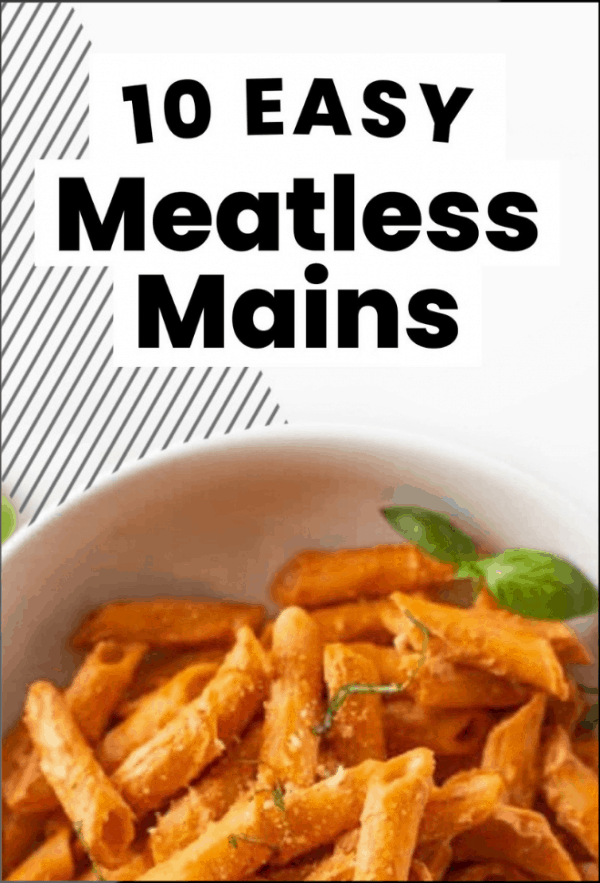

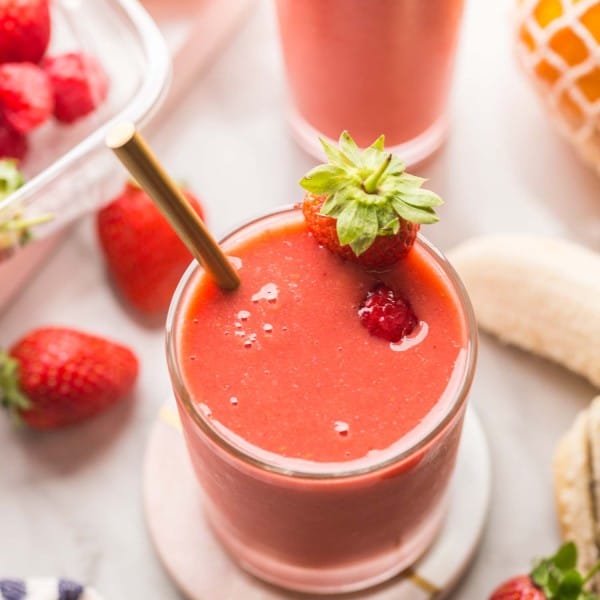
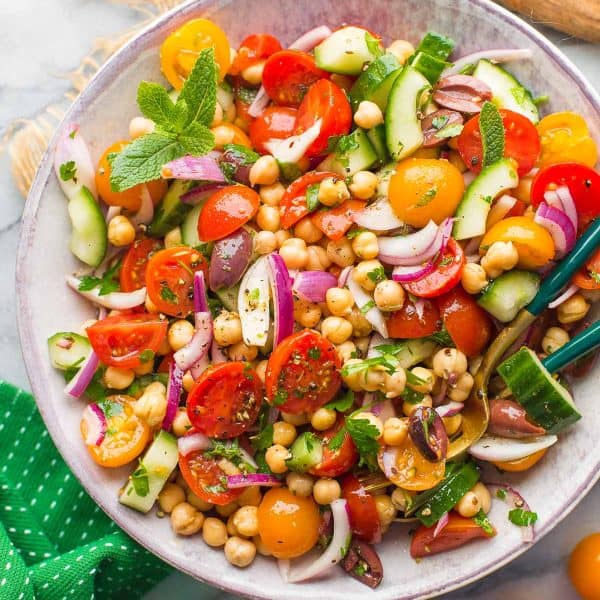
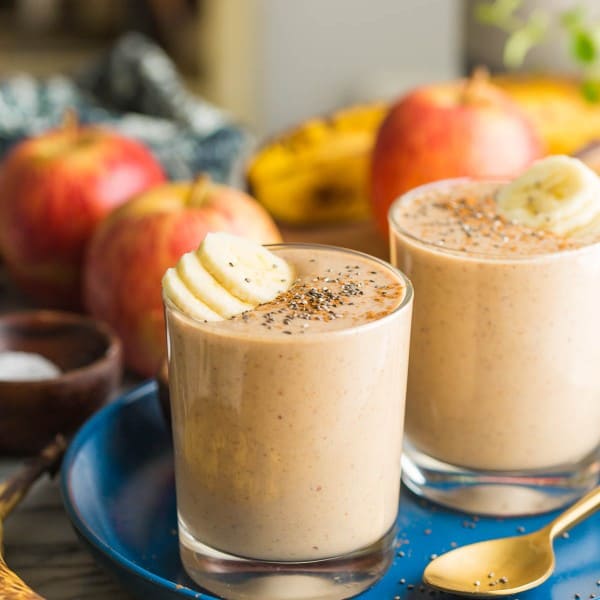
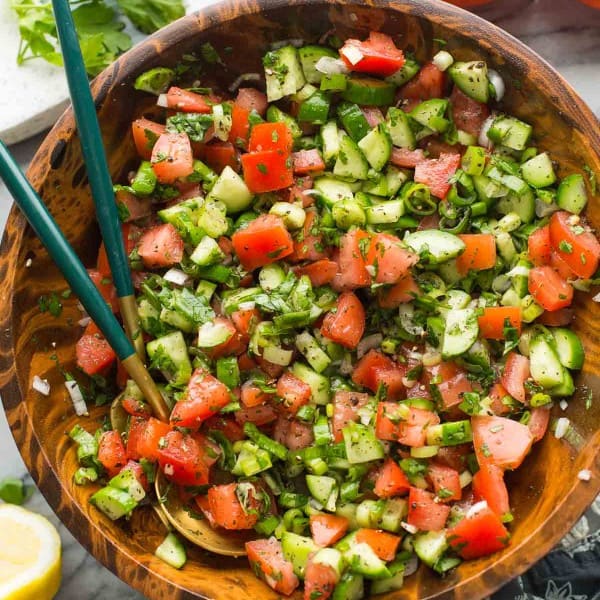
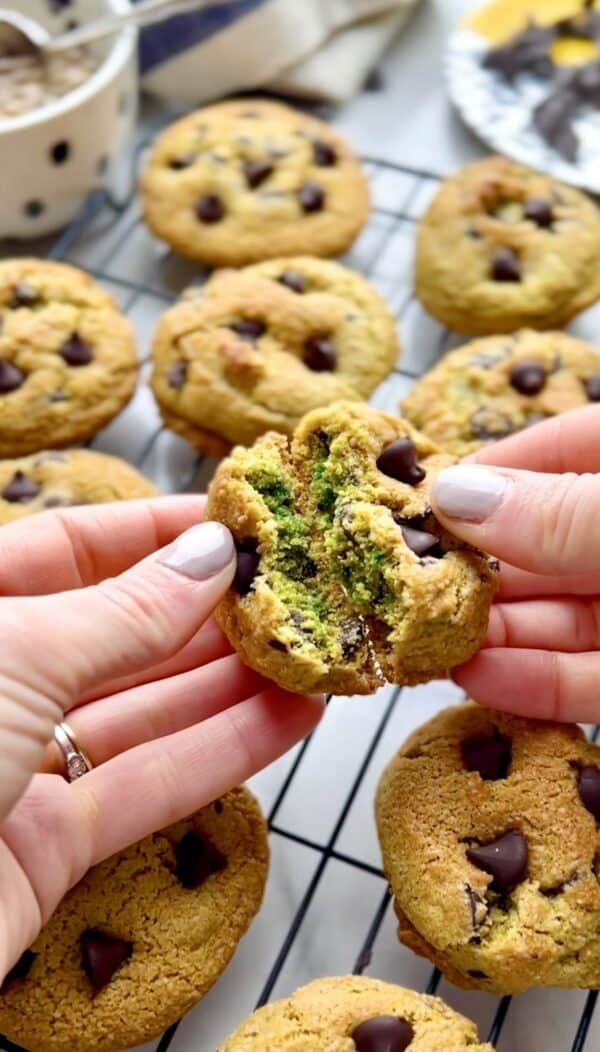
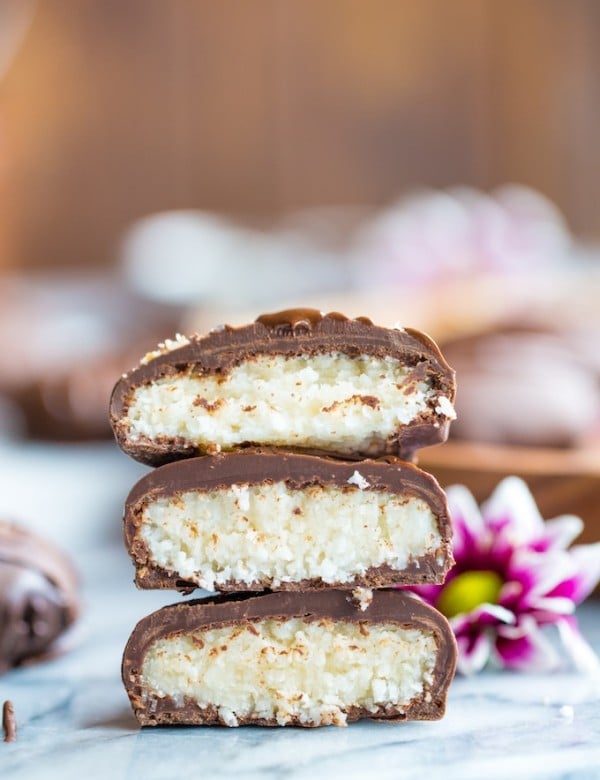

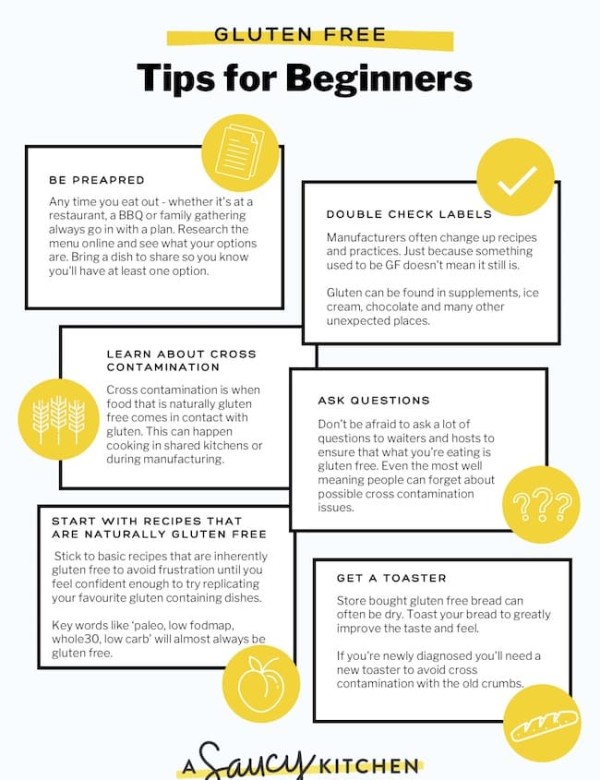
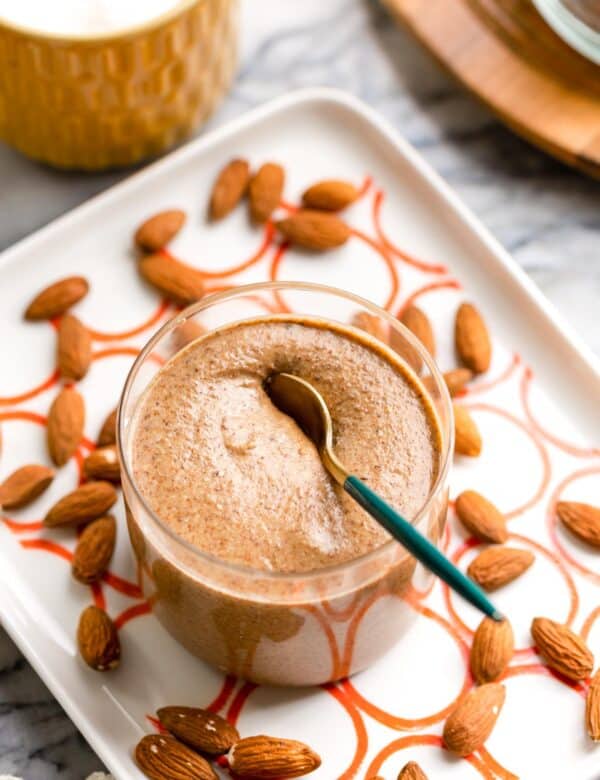
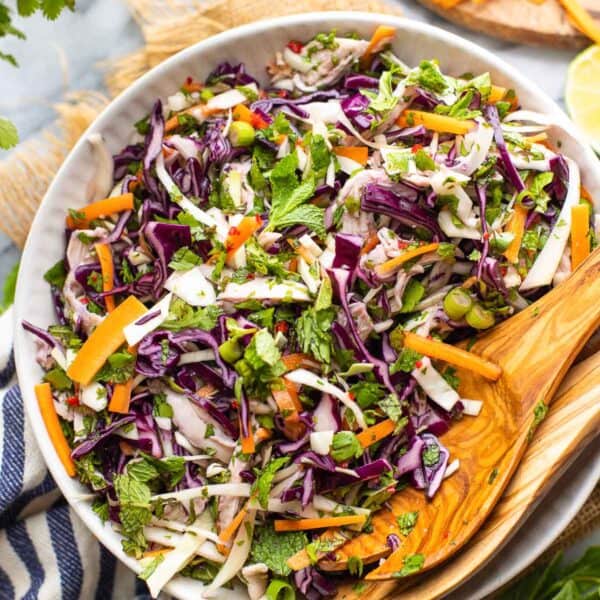
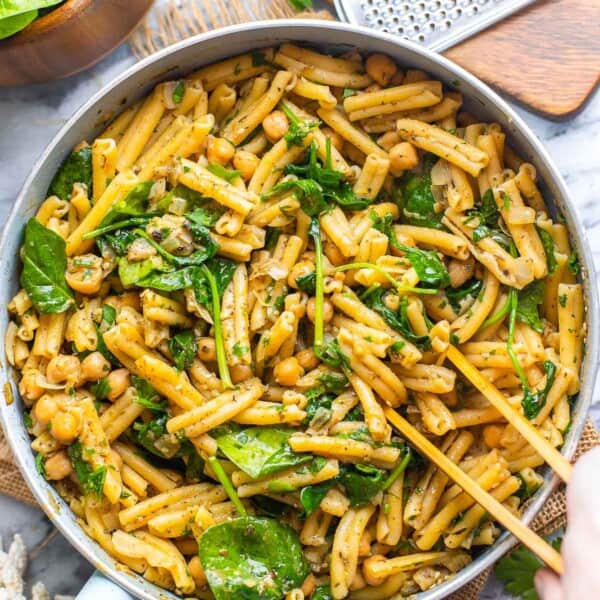
Verena says
Is there a way to make it as a more concentrated version, freeze it in ice cube trays and then added a couple cubes to your water as you go?
Sarah Nevins says
Hi Verena! That’s a good question! I haven’t tried this myself, but I do think you’d be able to get a more concentrated flavor simply by doubling everything except the water. In fact I think you probably want to use only 1-2 cups water instead of 4. The flavor on its own will be more intense with the citrus, but if you plan the freeze and add to water, this really shouldn’t be a problem. As for the baking soda and salt, I do think the citrus should also neutralise both of those as well.
I hope this helps!
Sonya says
Thanks I was really needing this
Sarah Nevins says
I’m so glad you’ve found it helpful 🙂
DSN says
Heating citrus destroys the vitamin C.
Sarah Nevins says
Hi there! That is true, but it really depends on how hot and and how long you are heating up your vitamin C. In this recipe you only cook to a simmer and for a fairly short period of time. Some degree of nutrient loss is inevitable, but it’s kept to a minimum.
It’s also worth noting that when you’re heating up fruit or veggies in water, the nutrients that the solid fruits/veggies lose leech out into the liquid. So by consuming the liquid you’re still getting a lot of the nutrients/minerals lost to the solids.
Janet R says
Why bother to heat this at all? Where’s the value?
Sarah Nevins says
Hi Janet! Heating up the water allows for a much quicker infusion of flavor (especially from the ginger) and ensures that the sweetener fully dissolves into the liquid. If the water is cold, you’re likely to have a much tricker time mixing in the maple/honey. You definitely could mix the water, ginger and citrus and drink it cold, but the flavor won’t be quite the same. That’s not necessarily a bad thing – there’s just a bot more variability in how things come out.
Amy says
Any support or trips greatly appreciated. 53 have always been healthy and super active. Didn’t take a pill. I’m a nurse practitioner and after Covid dx with POTS. I’m struggling mentally and physically trying to get a routine and wrap my mind around this.
Sarah Nevins says
Hi Amy! I’m so sorry to hear how much you’ve been struggling with the POTs diagnosis!
When Mike was first diagnosed it felt confusing and frustrating, but it did get easier once we learned more about it and came up with coping mechanisms to manage symptoms.
Staying hydrated is definitely a small thing, but makes a big difference.
If you really struggle with low blood pressure – keep a few packets of salt with you (like the ones from fast food places). If needed you can add it to a water bottle for a quick diy electrolyte drink. I’ve also seen some POTs patients eat it plain when they felt close to fainting. It doesn’t taste nice, but it’s effective.
He did better eating small meals from often as opposed to large meals more spaced out. I believe the logic here is that the more you eat at a time, the more digestion is required to process the food which means more blood flowing to your stomach.
This one sounds kind of basic, but when we’re out in public somewhere I always make sure to figure out possible seating areas right away. It’s good to know where you should go if you feel yourself starting to get dizzy. It’s just easier to have a plan in place because it’s hard to think straight when you’re feeling unwell.
Check with your doctor, but it could be worth looking into taking extra vitamins. Vitamin D3 and Vitamin B12 deficiency in particular have been linked PoTS.
Finally, I think it could be a good idea to try to find support groups (local or online). It’s always nice to get the extra tips from others who are going through the same thing!
My email and comments are always open though if you ever want a little more help or advice!
Nancy says
Hi Sarah, Can this recipe be made slicing the fruit and cooking it all together that way (minus or including the rinds) and in what amounts? My husband is going to start chemo soon and have radiation, so I thought this recipe would be good for minimizing nausea because of the added ginger.
Sarah Nevins says
Hi Nancy, I’m so sorry to hear that.
You can absolutely make this by slicing the fruit and simmering it!
To get a similar amount of juice from whole fruit you would need about: 2 oranges, 1 lemon and 1 lime. That being said, you can play around with the amount of fruit used, especially if some of the citrus fruit is small.
As for the rind, I recommend you leave some on. The peel will release a small amount of essential oils in the water as it boils making it more flavorful and nutritious. You don’t want to leave too much on though because it can make the juice a bit too bitter.
Wishing you and your husband all the best ❤️
leslie says
Great recipe ~ The only things missing were the amounts of potassium and chloride, which are both essential electrolytes. Do you at least have estimates on how much of each are contained in this drink?
Sarah Nevins says
Hi Leslie – you’re totally right! So I usually use MyFitnessPal for nutrition info – they calculate potassium (184mg here), but not chloride.
Sorry about that. The nutrition card that I fill out for my recipes don’t hold a space where I can enter potassium or chloride and I didn’t think to add it to the notes.
Kelly Forrester says
I’ve just stumbled upon your website and I love it! I’m gluten and dairy free and love a clean diet (it keeps my arthritis and M.E at bay). Anyway, my daughter has been diagnosed with POTS and she asked me to buy her Gatorade for the electrolytes. I so wanted to keep things natural and your suggestions are perfect! Thank you so much!
Sarah Nevins says
Hi Kelly – I’m so glad you found my site! My husband also has arthritis, ME and POTS so you’re definitely in the right place! If you or your daughter ever need a little extra help/advice or recipe requests for things you like to see please let me know and I am more than happy to help in anyway I can 🙂
Tahlee says
Thank you! This helped me so much, kept my HR in the 90s rather than 120+.
I made up a big batch and also added the zest of the citrus fruits into the mix (I enjoy pulp, so the zest plus the ginger was great, it just needs a stir/shake before drinking). Together with the ginger it made for a really enjoyable flavour. Plus the combination of tests also contain good amounts of vit C, provitamin A, folate, riboflavin, thiamine, vitamin B6, and small amounts of calcium, potassium, and magnesium.
Sarah Nevins says
I’m so glad to hear that it’s helped you – that makes me so happy to hear! Thanks so much, Tahlee!
Jodie L Poresky says
Hi there,
I am curious why you add baking soda for the recipe? Also, can you substitute any of the citrus i.e. grapefruit. Thanks, Jodie
Sarah Nevins says
Hi Jodie! The baking soda is where this drink gets its electrolytes – when broken down baking soda (also known as sodium bicarbonate) turns into an electrolyte that helps regulate/maintain fluid levels in the body which keeps you hydrated. If you’re interested in reading more about it I recommend checking out this article as they go into the science much better than I’d be able to: https://healthyeating.sfgate.com/baking-soda-electrolytes-12472.html
As for the lemon/lime – you can absolutely use another citrus like grapefruit!
Danielle says
Hi Sarah! Just curious about what the purpose of the baking soda is in the recipe. Thanks!
Sarah Nevins says
Hi Danielle! The baking soda is where this drink gets its electrolytes – when broken down baking soda (also known as sodium bicarbonate) turns into an electrolyte that helps regulate/maintain fluid levels in the body which keeps you hydrated. If you’re interested in reading more about it I recommend checking out this article as they go into the science much better than I’d be able to: https://healthyeating.sfgate.com/baking-soda-electrolytes-12472.html
Joan says
Danielle, I’m so glad you asked about the baking soda. I was curious too.